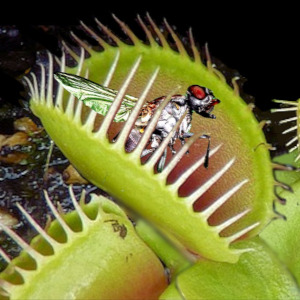The sense is a biological system that the organism uses for sensing. It means gathering information about the world by identifying stimuli. Most commonly, we talk about five senses, like sight, smell, touch, taste, and hearing. And all these are used when we talk about animals, especially humans. Scientists have discovered that there are actually a lot more different senses. Other organisms have even more senses. While we sense something, it means that the sense organ is gathering the information and sending the information to the brain in a way that the brain can understand it. Sensing and cognition are essential to almost every aspect of the organism’s feeling, behaviour, and thinking. In an organism, a sensing organ is made out of a group of connected sensory cells that understand a specific type of physical stimulus.
Plants don’t sense the world the same way we or other animals do. The reason is that they don’t have nerve cells. Plants have developed their own way of sensing the world around them. They have rudimentary sensing mechanisms.
Humans see light in a small part of the electromagnetic spectrum. The electromagnetic spectrum is made up of wavelengths and is visible to us between 400 and 700 nm. Plants are able to detect a little higher wavelength between 710 and 740 nm. Plants use it for photosynthesis. Animals can sense light because of a specific organ called the eye. The human eye is really complex and can detect a wide range of colours. In the human eye, there are rods and cons, and they contain protein pigment that absorbs colours. Plants can sense the best red and blue light. Plants can sense the colours because they have protein pigments that are sensitive to these wavelengths. These cells are called photoreceptors. Plants use the blue light to sense the day and night cycles.
Some plants are able to detect when they are being touched. It is most noticeable with Venus’ flytrap. On the trap lobes are small hairs, and they can sense the movement of an insect. When the hairs detect the movement, the trap closes quickly.
A less common example is the tendrils of crawling plants such as peas and other vines. Tendrils are transformed leaves covered with mechanoreceptors that look around for branches or other support systems. When a twig is found, these receptors are triggered, causing the vine to twist around for support.
One sense that we don’t talk about that often is the sense of balance. The organ we use for sensing is the inner ear. Plants are anchored to the soil or to another plant. But they still need sensors for their roots, because otherwise the roots might grow upward. These cells are called amyloplasts, and they have a gravity-sensing mechanism. These cells also contain and synthesize starch.
Plants also use chemical sensing. They release chemicals from their roots and leaves so that they can communicate with others. Also including microbes and insects. Plats use this mechanism for defence, and they also use it to attract bugs to come to them and pollinate them. Mostly, this is used by the flowers.
With these chemicals, plants can also detect harmful bacteria and other herbivores. When plants come under attack, for example, by slugs, they release volatile compounds that alert neighbouring plants that these herbivores are nearby and produce defensive compounds to defend themselves from attack.
Plants can also sense temperature. It is most commonly seen when the plants change their colours during the seasons. For example, the flowering time is influenced by the temperature change. Temperature sensing is regulated by a gene called the flowering locus (FLC). Scientists are afraid that due to climate change, the regulation of the FLC gene is under threat. Scientists have noticed that higher average temperatures at the beginning of the winter are associated with lower crop productivity.

Sources:
https://en.wikipedia.org/wiki/Sense
https://bowery.co/do-plants-have-senses/
https://www.jic.ac.uk/blog/how-do-plants-sense-the-world-around-them/
https://www.bbvaopenmind.com/en/science/bioscience/the-senses-of-plants/
